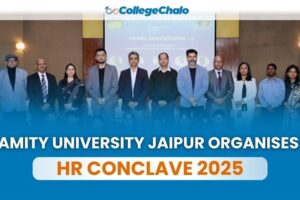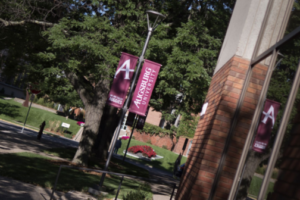
Too Many Students Think They’re Ineligible for Financial Aid
Roughly 55 percent of this year’s high school graduating class applied for federal financial aid, a significant comeback after the glitchy rollout of a new version of the form last year.
But even with that progress, this year, like every year, many students didn’t submit the Free Application for Federal Student Aid. (Out of nearly four million graduating seniors in 2025, about 1.6 million did not complete the FAFSA.) A new analysis of data from fall 2024 by the National College Attainment Network delved into why and found that many students likely assume—falsely—that they’re ineligible for aid.
The analysis drew on data from Trellis Strategies’ Student Financial Wellness Survey, conducted last fall, which included responses from more than 53,000 undergraduate students at 104 institutions across the country. Among other questions, it asked students who didn’t complete the FAFSA what factors contributed to their decision.
Some reasons rose to the top: 21 percent reported that they didn’t need aid to afford college, 20 percent said they feared incurring debt and 15 percent said they didn’t have enough information about how to apply. Another 15 percent reported that the application was too time-consuming and 11 percent said they were deterred by last year’s shaky FAFSA application process. But the most prevalent answer, for 49 percent of respondents, was that they didn’t believe they qualified for the aid.
The question explored in the new data analysis is who these students are—high-income students correctly assuming they’re not eligible for federal financial aid or low-income students who might be missing out?
Bill DeBaun, NCAN’s senior director of data and strategic initiatives, wrote in the analysis that the distinction between the two groups is critical.
“If we have students from low-income backgrounds who are misinformed about their eligibility for need-based aid unlocked by the FAFSA, that represents a continued fieldwide awareness problem that all stakeholders need to continue to correct,” he said.
NCAN and Trellis sought to differentiate between upper- and lower-income students by looking at how they answered other survey questions, including whether they would have trouble getting $500 in cash or credit to meet an unexpected need within the next month, and whether they’d received public assistance since January 2024.
The data analysis found that 48 percent of respondents who said they would struggle to access $500 didn’t complete the FAFSA because they thought they didn’t qualify for aid. Meanwhile, 41 percent of respondents who received some type of public assistance—like food, health care, housing or unemployment benefits—believed they weren’t eligible for financial aid.
The analysis concluded that a large percentage of students who might qualify for federal financial aid assume they don’t so they don’t even apply. In a similar vein, respondents who couldn’t access $500 or who received public benefits were more likely than their peers to report that they didn’t apply because they didn’t have enough information about the FAFSA.
“Somewhere between 40-50% of lower-income respondents who didn’t complete the FAFSA thinking they’d be ineligible for financial aid is a clear sign of being mis- or underinformed about the need-based grant aid unlocked by the federal form,” DeBaun wrote. “It’s a massive, glaring miscommunication to students and families that our collective policy, programming, and practice can chip away at and correct.”

Source link



